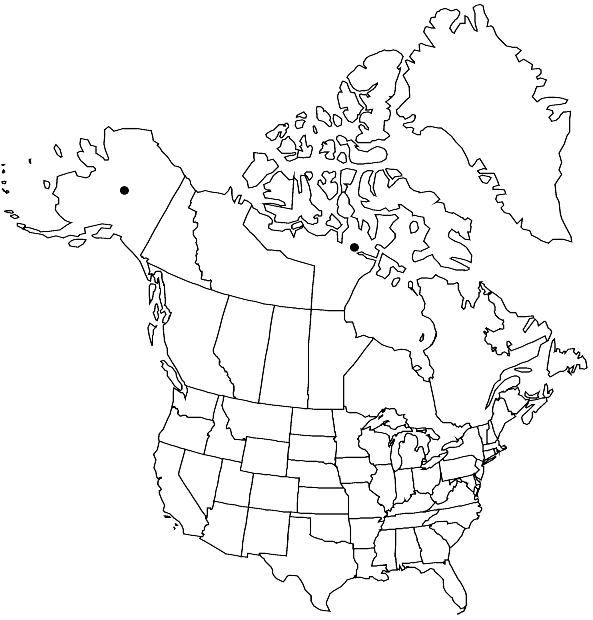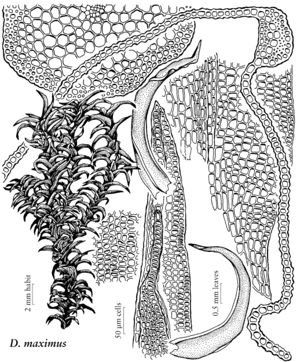Didymodon maximus
J. Bryol. 11: 599. 1982,.
Plants green to redbrown. Stems often more than 3 cm, central strand present. Stem-leaves appressed when dry, strongly recurved and keeled when moist, monomorphic, ovate-triangular, adaxially grooved along costa, 2–2.5 mm, base scarcely differentiated in shape to ovate, margins nearly plane to recurved at mid leaf, entire, apex broadly acute; costa percurrent to short-excurrent, not fragile, weakly tapering, widened pad of cells absent, adaxial costal cells elongate, 2–3 cells wide at mid leaf, guide cells in 1 layer; basal laminal cells differentiated medially, rectangular, walls thickened and often porose; distal laminal cells 13–15 µm wide, 1: 1, papillae usually present, simple, often large, 1–3 centered over lumens, lumens angular, walls irregularly thickened and often trigonous but trigones smaller than lumens, convex on both sides, 1-stratose. Specialized asexual reproduction absent. Sexual condition sterile in range of flora. Sporophytes unknown. Distal laminal KOH reaction dark red.
Habitat: Cliffs, outcrops, canyons, limestone, tundra meadow
Elevation: low to moderate elevations (20-1300 m)
Distribution

Nunavut, Alaska, w Europe
Discussion
Didymodon maximus is rare and apparently disjunctive to the western British Isles (W. C. Steere and G. W. Scotter 1978).
Selected References
None.
Lower Taxa
"um" is not declared as a valid unit of measurement for this property."um" is not declared as a valid unit of measurement for this property.
